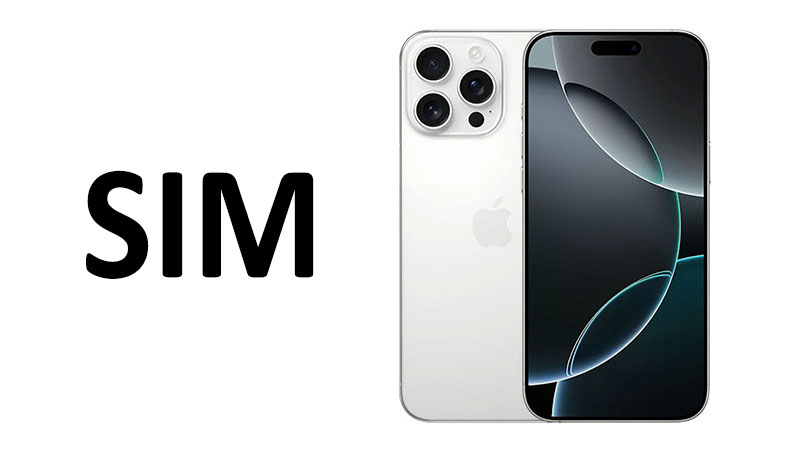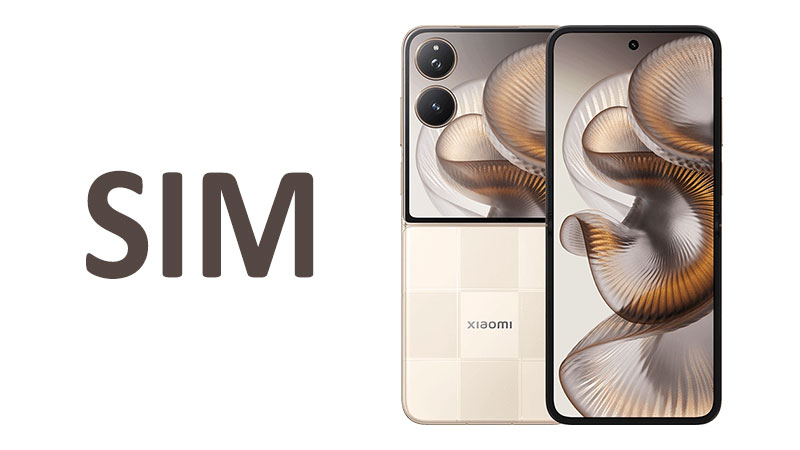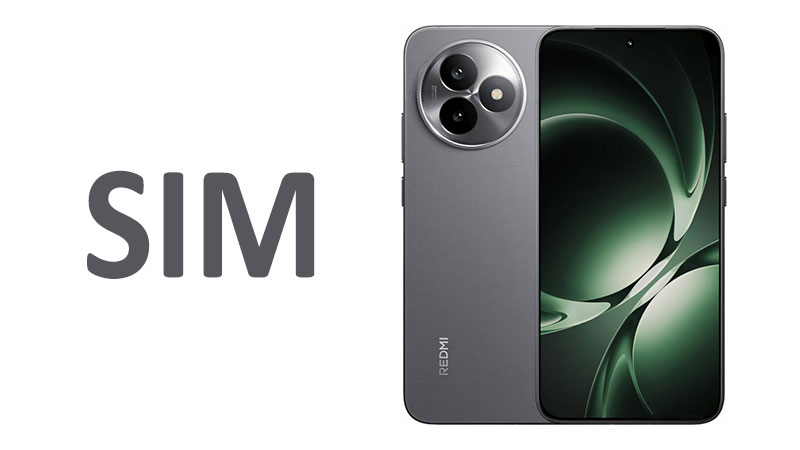The Apple iPhone 16 Pro SIM configuration marks a major evolution in mobile connectivity. It introduces complex, region-specific support for dual-SIM technology. This powerful device integrates advanced cellular and wireless standards. The goal is delivering unparalleled speed and global utility. Understanding these specifications is vital for any potential buyer. We will explore the dual-SIM limitations and the advanced wireless hardware. This thorough analysis ensures you grasp the iPhone 16 Pro’s full potential.
Introduction: The New Era of iPhone Connectivity
The Apple iPhone 16 Pro SIM setup is a key component of the new device architecture. It defines how users interact with global cellular networks. Dual-SIM functionality remains essential for many modern professionals and travelers. They require two active phone numbers on a single handset. This feature streamlines work-life balance and simplifies international travel. The iPhone 16 Pro leverages both physical Nano-SIM cards and digital eSIM technology. The specific combinations vary widely by geographical region. This strategic difference addresses varying regulatory environments worldwide. The shift toward digital-first connectivity promises greater flexibility and security.
Regional SIM Configurations Explained
Apple customizes the physical and digital SIM configurations for different markets. These choices reflect local carrier infrastructure and government regulations. The iPhone 16 Pro’s SIM flexibility remains high, but region determines the method.
International Model: Nano-SIM + Dual eSIM
Most international versions of the iPhone 16 Pro will offer triple SIM capability. The user can store multiple eSIM profiles on the device. However, only two lines can remain active simultaneously. This configuration includes one physical Nano-SIM slot. It also supports up to two active digital eSIM lines.
This provides the best balance of legacy support and future technology. Users who frequently swap physical SIMs for data plans can still do so. At the same time, they gain the convenience of an instantly provisioned second line. The ability to store several inactive eSIMs is excellent for travelers. They can activate a local SIM plan with a simple digital download. They avoid the hassle of finding a physical SIM card vendor overseas.
USA Model: eSIM Only
The United States market continues Apple’s move toward a completely digital SIM experience. The US version of the iPhone 16 Pro is expected to be eSIM-only. It offers no physical Nano-SIM tray whatsoever. This commitment to digital connectivity began with previous iPhone generations. It simplifies the device design and improves water resistance. Users can store eight or more eSIM profiles on the device. They can keep a maximum of two lines active at any given moment.
This eSIM-only approach offers significant advantages for security and theft protection. A digital SIM cannot be removed if the phone is lost or stolen. It simplifies the setup process when switching carriers or activating new devices. Some users, however, still prefer the familiarity of a physical card. They may find the lack of a physical slot slightly restrictive, especially when traveling abroad.
China Model: Dual Physical Nano-SIM
The Chinese market often demands specific hardware configurations. The iPhone 16 Pro sold in mainland China is expected to feature a dual physical Nano-SIM tray. It will allow two physical SIM cards to be inserted side-by-side. This arrangement is highly valued in China. Many consumers use separate SIMs for work and personal life. They also rely on two different carrier networks.
This model is ideal for users needing constant, simultaneous access to two physical lines. It foregoes the eSIM technology completely for the dual Nano-SIM setup. This choice prioritizes maximum physical compatibility within the local market. It ensures Apple meets the specific expectations of Chinese consumers.
The Evolution of Cellular Connectivity
The iPhone 16 Pro continues to support a vast array of cellular technologies. This wide compatibility ensures global roaming and connectivity. It supports everything from legacy 2G to the cutting edge of 5G.
Comprehensive Network Support
The device supports GSM, CDMA, HSPA, and EVDO standards. These older technologies provide fallback connectivity in remote or developing regions. The primary focus remains on LTE and 5G networks. LTE ensures fast, reliable 4G connectivity across all modern networks.
The inclusion of multiple cellular standards is crucial for global travelers. It prevents dead zones in areas where 5G or advanced LTE is not yet available. This broad technological coverage enhances the phone’s utility worldwide. It makes it a true global smartphone.
Advanced 5G Capabilities
The iPhone 16 Pro fully capitalizes on the potential of 5G technology. This includes both sub-6 GHz and mmWave bands. Sub-6 GHz 5G provides wide coverage and good performance. MmWave offers ultra-fast speeds, mainly in dense urban areas. The device likely incorporates an enhanced modem. This modem improves 5G stability and energy efficiency. Faster 5G speeds enable seamless streaming, rapid downloads, and high-fidelity video conferencing.
Specialized comparisons show this modem may feature better carrier aggregation. Carrier aggregation combines multiple 5G channels. This results in significantly higher sustained data rates for the user. Previous generations already excelled at 5G. The iPhone 16 Pro refines this performance with faster processing and lower latency.
Next-Generation Wireless Ecosystem
The iPhone 16 Pro connectivity suite goes far beyond cellular networks. It features the latest advancements in local area networking and short-range wireless. These upgrades are vital for modern high-bandwidth applications.
Revolutionary Wi-Fi 7 Technology
The iPhone 16 Pro features support for Wi-Fi 802.11 a/b/g/n/ac/6e/7. The most notable inclusion is Wi-Fi 7. Wi-Fi 7 is also known by its technical name, 802.11be. It represents a monumental leap forward in local wireless data transmission.
Wi-Fi 7 builds upon the foundation of Wi-Fi 6E. It utilizes the 6 GHz band for less interference and greater capacity. However, Wi-Fi 7 introduces Multi-Link Operation, or MLO. MLO allows the device to transmit and receive data across multiple bands simultaneously. This includes 2.4 GHz, 5 GHz, and 6 GHz. It drastically increases speed and network reliability.
Furthermore, Wi-Fi 7 doubles the channel width to 320 MHz. It uses a denser modulation technique, 4096-QAM. These technical improvements increase the theoretical maximum speed significantly. Consumers can expect speeds potentially 4.8 times faster than previous standards. This is critical for high-resolution video streaming and cloud-based gaming. The iPhone 16 Pro is future-proofed by adopting this standard early. This allows it to maximize performance when compatible routers become common.
Wi-Fi 6E and Tri-Band Support
While Wi-Fi 7 adoption grows, the inclusion of Wi-Fi 6E remains important. Wi-Fi 6E uses the 6 GHz band to reduce network congestion immediately. The tri-band support (2.4 GHz, 5 GHz, 6 GHz) ensures network flexibility. The 2.4 GHz band offers the longest range, passing through walls easily. The 5 GHz band provides faster speeds over a medium range. The 6 GHz band gives the fastest, cleanest signal at close range. The hotspot feature also benefits from this advanced Wi-Fi capability. It allows the iPhone 16 Pro to share its high-speed connection efficiently with other devices.
Bluetooth 5.3 and NFC
The device integrates Bluetooth 5.3 technology. Bluetooth 5.3 offers improved power efficiency and reliability. It also supports better audio quality for connected accessories like AirPods. This standard includes features like LE Audio. LE Audio enables higher quality audio with lower latency. It also supports broadcasting audio to multiple devices simultaneously.
NFC, or Near Field Communication, remains fully supported. This is essential for contactless payments using Apple Pay. It also facilitates quick pairing with accessories. NFC capabilities are standard across modern smartphones. The iPhone 16 Pro provides the robust and secure implementation users expect from Apple.
High-Precision Global Navigation Satellite System
Accurate location tracking is now fundamental to smartphone utility. The iPhone 16 Pro significantly upgrades its positioning system. It uses a sophisticated multi-frequency approach.
Dual-Frequency GPS (L1+L5)
The iPhone 16 Pro supports dual-frequency GPS, using both L1 and L5 signals. L1 is the traditional civilian GPS signal. L5 is a newer, higher-power, and wider-bandwidth signal. Receiving both signals concurrently dramatically improves accuracy.
Dual-frequency technology helps mitigate errors caused by obstructions. These are known as multipath errors. This occurs when signals bounce off buildings in urban canyons. The L5 signal is better at distinguishing direct signals from reflected ones. It also helps correct for ionospheric signal distortion. This results in significantly more precise location data. Navigation apps can tell which lane you are driving in. Fitness tracking and augmented reality applications benefit immensely from this precision.
Global GNSS Support
Beyond GPS, the iPhone 16 Pro connects to several other Global Navigation Satellite Systems. These include GLONASS (Russia), GALILEO (Europe), BDS (China), QZSS (Japan), and NavIC (India). Using multiple satellite constellations improves reliability and time-to-first-fix. Even if some GPS satellites are obstructed, the phone can use other systems. This redundancy ensures positioning remains fast and accurate anywhere in the world.
Wired Connectivity and Media Output
The iPhone 16 Pro adopts the modern standard for wired connectivity. This provides high-speed data transfer and robust external display support.
USB Type-C 3.2 Gen 2
The iPhone 16 Pro uses a USB Type-C port. This port adheres to the USB 3.2 Gen 2 standard. This specification supports data transfer speeds up to 10 Gbps. This is a crucial upgrade for Pro users. They often transfer large video files, such as 4K ProRes footage. Fast wired transfer dramatically shortens the time needed to move files to a computer.
The USB-C port also supports power delivery and charging. The high-speed standard is important when comparing it to previous models. Earlier generations sometimes limited USB-C to the slower 480 Mbps USB 2.0 standard. The iPhone 16 Pro unlocks professional-grade wired performance.
DisplayPort Capability
The USB-C port also incorporates DisplayPort functionality. This allows users to output video directly to an external monitor or television. DisplayPort support provides high-resolution, low-latency video output. This is perfect for presentations, external monitoring during filming, and mobile gaming. It transforms the iPhone into a powerful mobile workstation.
Radio Exclusion
The specification confirms that the iPhone 16 Pro does not include an FM or AM radio tuner. This is standard practice for modern smartphones. Users rely entirely on streaming applications for listening to live radio.
Specialized Comparisons and Buyer Considerations
The connectivity features on the iPhone 16 Pro set a new benchmark. It clearly surpasses most previous iPhone models and several competitors.
Comparison with iPhone 15 Pro
The most significant upgrade from the iPhone 15 Pro is the jump to Wi-Fi 7. The iPhone 15 Pro features Wi-Fi 6E. Wi-Fi 7 offers much higher theoretical speed and the crucial MLO feature. This alone justifies an upgrade for users with compatible Wi-Fi 7 routers. The USB-C port speed is likely maintained at the 10 Gbps level introduced previously. The core dual-SIM architecture remains similar but with refinement in the eSIM management.
Comparison with Android Flagships
Android rivals often match Apple in supporting dual-frequency GPS and advanced 5G. However, Wi-Fi 7 adoption is still rolling out across the ecosystem. The iPhone 16 Pro’s integration of Wi-Fi 7 puts it at the forefront of wireless standards. Its tightly controlled hardware and software integration ensure optimal performance. Apple often delivers superior user experience, even with similar hardware specifications.
Important Buyer Points
A buyer should know the SIM configuration is location-dependent. If you purchase the phone in the USA, you will not have a physical SIM tray. This is crucial for frequent international travelers. They might prefer the flexibility of the international model. The high-speed connectivity requires compatible accessories. Wi-Fi 7 speeds only appear with a Wi-Fi 7 router. The 10 Gbps USB transfer needs a USB 3.2 Gen 2 cable. Investing in the right accessories maximizes the phone’s potential.
The dual-frequency GPS provides military-grade accuracy. This is particularly useful in dense urban areas or near tall structures. The extensive GNSS support ensures superior navigation globally.
Pros and Cons of the Connectivity Suite
Reviewing the entire connectivity package helps assess its overall value. The iPhone 16 Pro offers substantial benefits but carries minor limitations.
Pros
- Future-Proof Wi-Fi 7: This inclusion guarantees maximum speed and efficiency for years.
- Dual-Frequency L1+L5 GPS: It provides exceptional accuracy, mitigating urban signal reflection.
- Flexible Dual-SIM Options: The regional approach ensures compliance and market suitability.
- High-Speed USB-C: 10 Gbps data transfer significantly aids professional workflows.
- DisplayPort Support: It simplifies external monitor connectivity for pro users.
- Broad 5G and GNSS Coverage: This ensures reliable global connectivity and location tracking.
Cons
- US eSIM-Only Limitation: The lack of a physical SIM slot limits some travel flexibility.
- Wi-Fi 7 Infrastructure Dependency: Users need a new router to experience the full benefits.
- Radio Exclusion: The absence of a traditional FM/AM tuner might inconvenience some users.
- Complexity of Regional Models: Buyers must understand the specific SIM limitations of their model.
Comprehensive Summary for the Reader
The iPhone 16 Pro connectivity package represents a substantial technological upgrade. It focuses on speed, precision, and efficiency across all spectrums. The regional SIM strategy ensures compliance worldwide. It offers great convenience for digital users in the USA. It maintains physical dual-SIM capability where required, such as in China. The move to Wi-Fi 7 places the device ahead of the curve. It offers future potential for ultra-high-speed local networking. The dual-frequency GPS improves location accuracy in difficult environments. Furthermore, the USB Type-C 3.2 Gen 2 port offers blazing-fast data transfer. This makes the phone a powerful tool for media professionals. Choosing the iPhone 16 Pro is an investment in cutting-edge mobile connectivity. It promises a smoother, faster, and more precise user experience. Therefore, buyers should carefully consider the regional SIM differences. They should also plan for necessary router and cable upgrades to maximize performance. The extensive GNSS support ensures that you always know where you are. This feature is crucial for safety and complex navigation tasks.
Conclusion: Making an Informed Connectivity Choice
The Apple iPhone 16 Pro SIM and connectivity features are industry-leading. Apple designed the device to handle future data demands easily. The combination of Wi-Fi 7 and advanced 5G provides peak performance. Professionals will appreciate the 10 Gbps USB-C data rate and DisplayPort. Travelers must decide if the physical SIM flexibility is worth purchasing the international model. The US eSIM-only model is a secure and convenient choice for most domestic users. Ultimately, the iPhone 16 Pro delivers a connectivity suite that is robust and highly responsive. It sets a new standard for flagship smartphone performance. This device is ready for the next generation of mobile applications and services.
Frequently Asked Questions (FAQ)
1. Does the iPhone 16 Pro support two active phone numbers simultaneously?
Yes, the iPhone 16 Pro supports two active lines at a time. This is true across all regional models. International and US models use two eSIMs or one Nano-SIM plus one eSIM. The China model uses two physical Nano-SIM cards.
2. What is the main benefit of Wi-Fi 7 over Wi-Fi 6E on this phone?
Wi-Fi 7 introduces Multi-Link Operation (MLO) and wider 320 MHz channels. MLO allows the iPhone 16 Pro to use two frequency bands at once. This results in significantly faster speeds and much lower latency compared to Wi-Fi 6E.
3. How does the L1+L5 GPS improve location accuracy?
L1+L5 GPS uses two different satellite frequencies. This allows the iPhone 16 Pro to correct signal errors. These errors come from atmospheric distortion and signals reflecting off buildings. This correction leads to more precise and reliable positioning.
4. Is the USB Type-C port fast for data transfer?
Yes, the USB Type-C port operates at the USB 3.2 Gen 2 standard. This supports data transfer speeds up to 10 Gbps. This is ideal for quickly moving large files like high-resolution videos.
5. Can I use a physical SIM card if I buy the iPhone 16 Pro in the United States?
No, the iPhone 16 Pro model sold in the United States is expected to be eSIM-only. It will not have a physical Nano-SIM card slot. You must use digital eSIM technology for cellular service.



